TOP > >
ADF Art Gallery Project Vol.28 Issho Watanabe Solo Exhibition ∪Atomic Love -Transience of Life - ∩
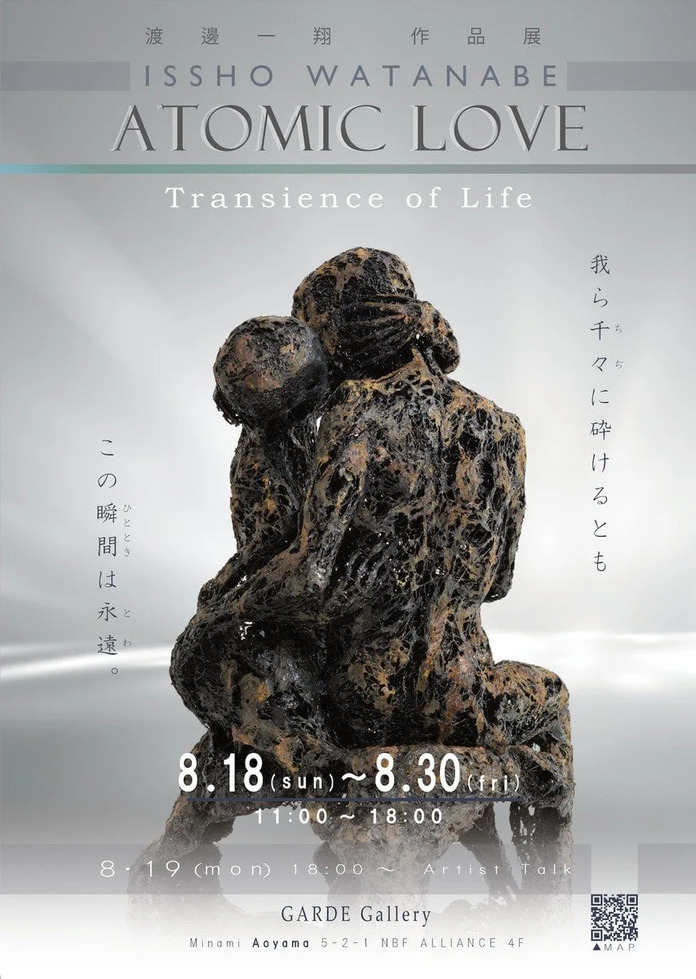
Peaceful everyday life is happiness - The reality of the Reiwa era, which respects every moment of the daily life we weave together
ADF (NPO Aoyama Design Forum) is pleased to present ∪Atomic Love - Transience of Life -,∩ the 28th exhibition of the ∪ADF Art Gallery Project∩ by artist Issho Watanabe, which celebrates the preciousness of everyday life, from Sunday 18 August to Friday 30 August 2024. The exhibition will be held from Sunday, 18 to Friday, 30 August 2024. The exhibition will feature works that remind us of the gratitude and preciousness of the everyday life surrounding us. While the storytellers of war experiences are becoming rare as we approach the 80th anniversary of the war, the composition of the exhibition reaffirms the irreplaceability of the ordinary through thinking about the reality of war in the peaceful Japan of 2025. Please pay attention to the message of the artist, who, as an artist and a member of the young generation living in today's peaceful Japan, practices what he can do to "prevent the repetition of mistakes."
Watanabe's work reminds us once again of the preciousness of a peaceful daily life through fleeting objects that are about to disappear suddenly. "Is it ignorant and sometimes disrespectful for those who haven't experienced war like Watanabe to talk about war?" Despite the changes in the international situation, war is still an urgent issue for the society and the time in which they live, and Watanabe's perspective on the war as a present issue in Japan, which is peaceful and orderly, contains many suggestions, including the life-size reality felt by their generation.
Watanabe's work reminds us of the preciousness of a peaceful environment through objects that are fleeting and about to disappear." Is it ignorant and sometimes disrespectful for Watanabe, who falls into the category of children of "children who have never known war," to talk about war? Despite the changes in the international situation, Watanabe's perspective on war as an issue that is still a genuine concern for his generation and the society in which he lives, in a peaceful and orderly Japan, contains many suggestions, including the life-size reality that his generation feels.
For Watanabe, the reality of war is the instantaneous disappearance of irreplaceable, ordinary, happy everyday life. This is not limited to war. Natural disasters, conflicts, and epidemics potentially threaten our peaceful order all the time. Calamities can instantly transform the goods of the human hymn that humanity has built up to date into something shapeless and lost forever.
"Le Baiser(The Kiss)" on display at this exhibition is a symbolic work that captures this moment of happiness. Using Rodin's sculpture as a motif, the double process of the moment of bliss between a man and a woman and the loss of the sculpture due to disaster can be felt.
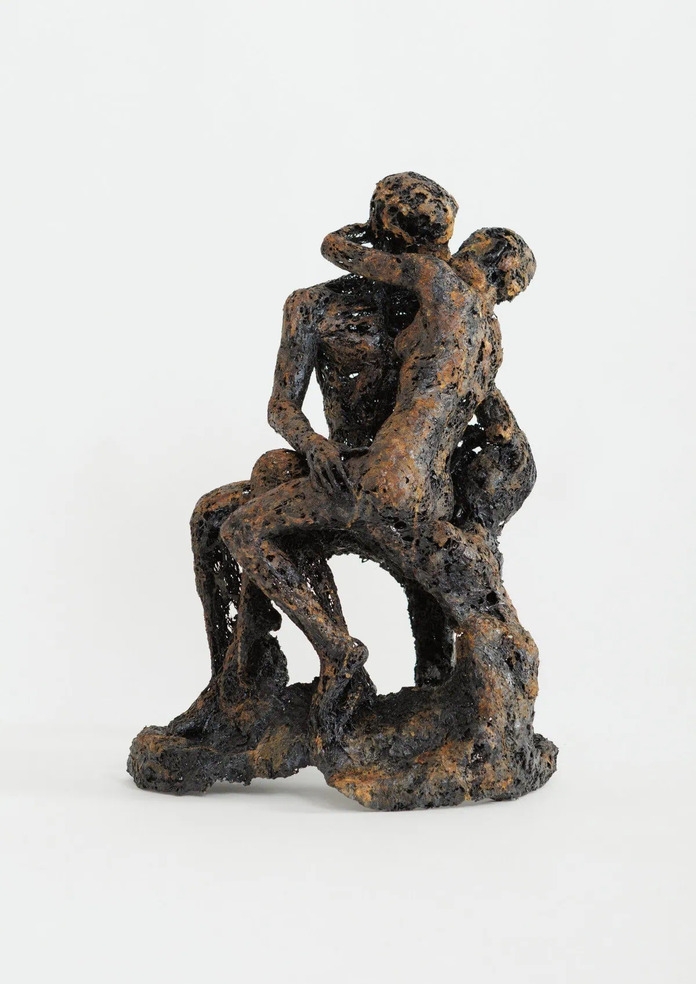
"Le Baiser" , Iron, Copper
Size : 30x33x49 cm , 2024
For this exhibition, he has created the Statue of the Children of the Atomic Bomb in Hiroshima Park as a prayer for peace. For Watanabe, who also works as an art teacher, the loss of young children is unimaginable. Watanabe had the misfortune to experience a stillbirth and once held a baby in his palm. The warmth was a feeling he would never forget, and he says it made him realize the preciousness and sublimity of life throughout his entire existence. Since then, Watanabe has been reminded again and again of the miracle of his students and their families being "here and now". Watanabe says, "I feel a sense of regret at the absurdity of the lives that were nurtured with love and care but disappeared from the world in an instant due to air raids and atomic bombs, and I want to express this shock in something as Yuichi Inoue did."
Watanabe is also working on icons as a new challenge. Believing in the potential of art, he is practicing the life-size anger management that he can do as a participant in peace.
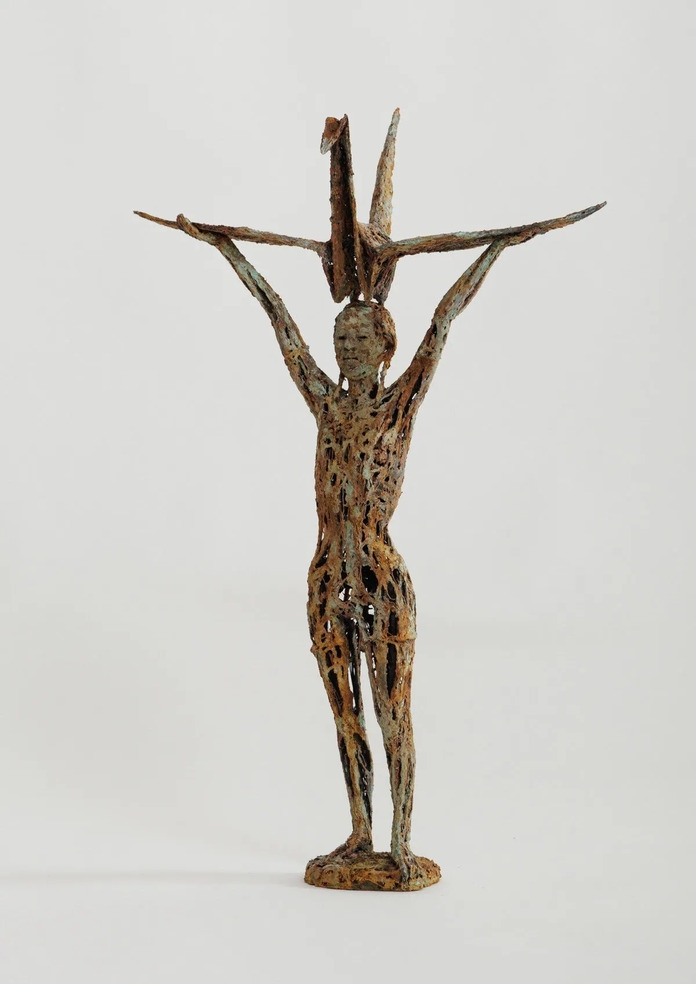
"Children's Peace Monument" , Iron, Copper
Size : 17x35x53 cm , 2024
Watanabe believes that songs of love dissimilate our commonplace routines and make us remarkably reacquainted with the moments worth living for. Music enriches people, and songs based on the motif of human affection are the most supreme of all. It was not a grand and solemn symphony but a chanson that made him realize the irreplaceability of the everyday. This work is a symbolic expression of Edith Piaf, the chanson singer who lived for love and lived for the song, the eternity of that irreplaceable moment, the everyday life in which life is vibrant.

"Édith Piaf" , Iron, Copper
Size : 10x14x37 cm , 2024
Many of us are so busy that we lose heart and tend to despise everyday life. Watanabe strongly feels that the greatest happiness is a peaceful everyday life and that the time spent looking at mothers and children is an imperishable joy. "Madonna" represents this scene.
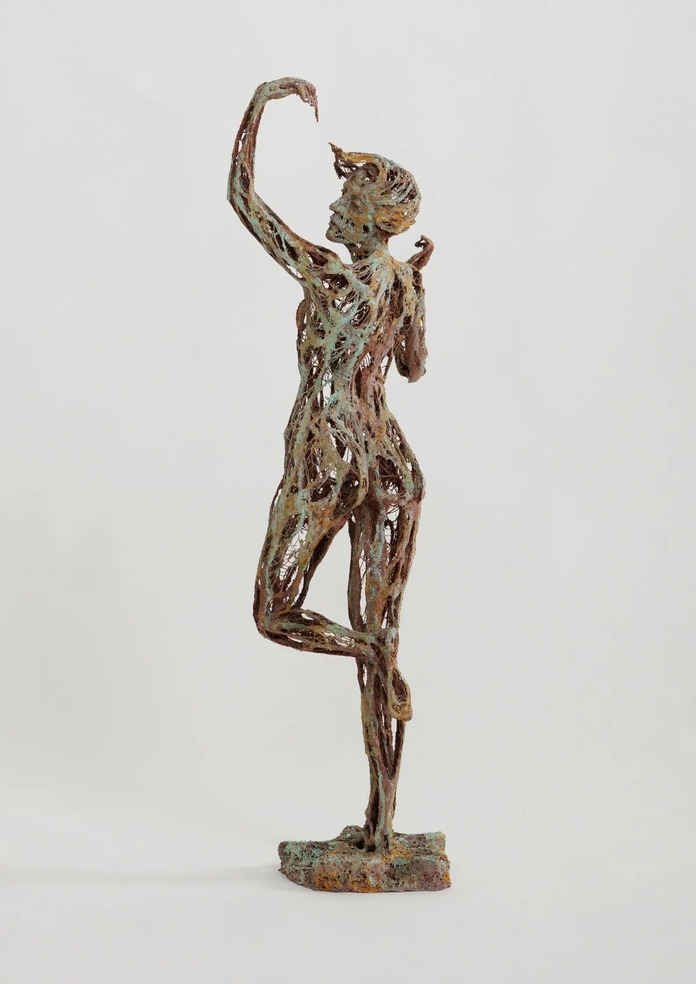
"Madonna" , Iron, Copper
Size : 20x27x48 cm , 2024
In his artworks, the greenish-blue color revives the ancient Japanese azure and even creates a wabi-sabi atmosphere. The motifs and essence of the forms based on drawings originate from Western art, while the expressive techniques that lead to wabi-sabi originate from Japanese culture. As a new form of artistic expression, it boldly challenges the fusion of Eastern and Western civilizations.
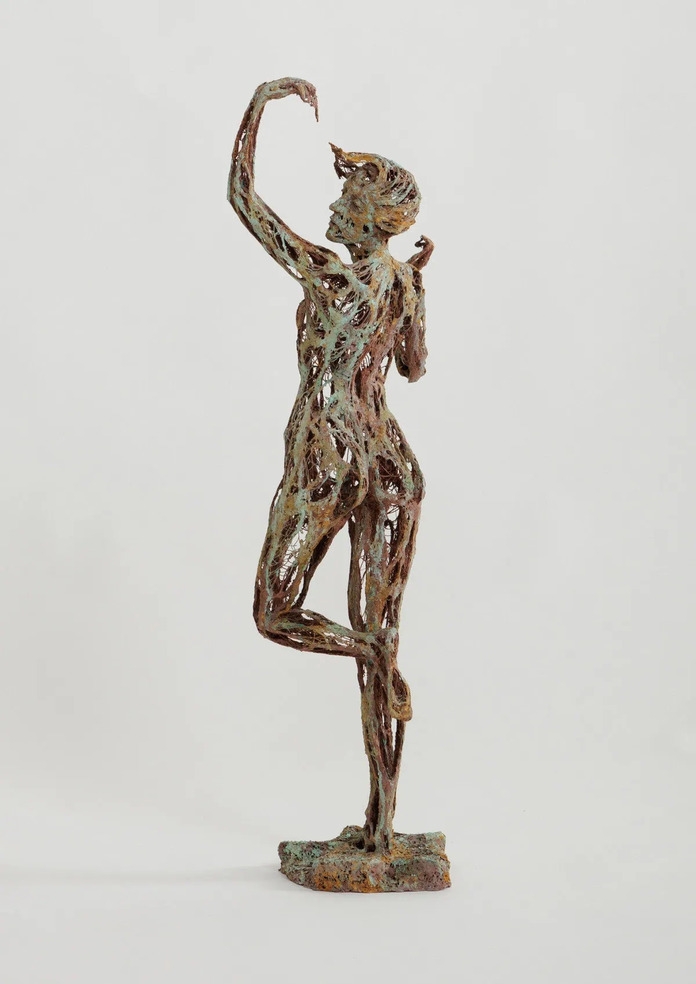
"Nude –Before Mirror-" , Iron, Copper
Size : 21∵26∵62 cm , 2024

"Nude –Nymph-" , Iron, Copper
Size : 30∵29∵30 cm , 2024
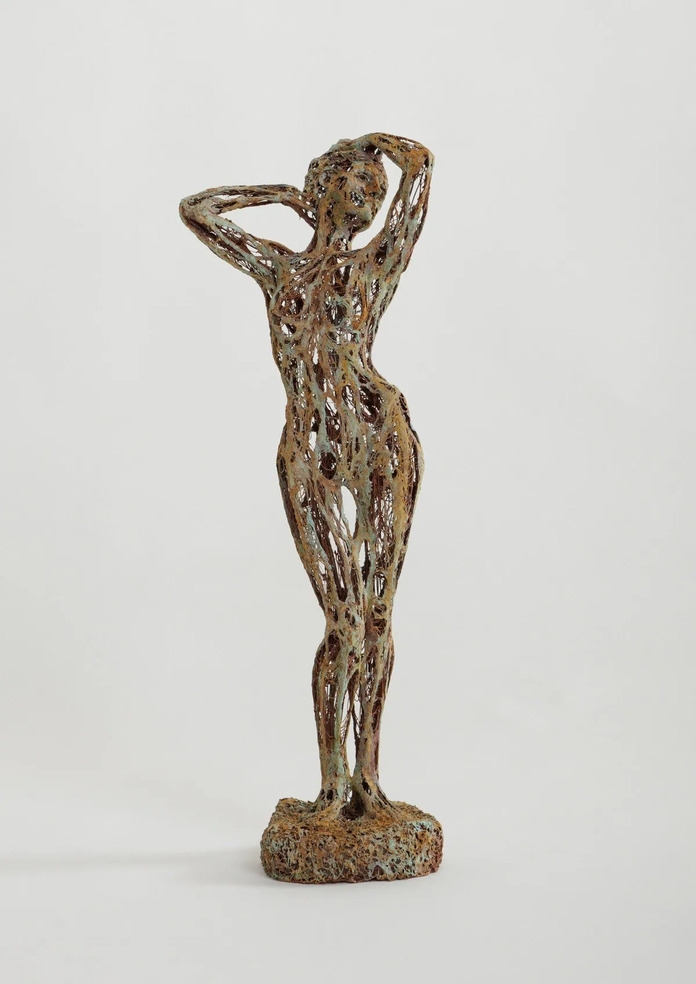
"Nude –The Heart's Awakening-" , Iron, Copper
Size : 21∵26∵62 cm , 2024

"Nude –Biblis-" , Iron, Copper
Size : 20x54x25 cm , 2024
The title of this exhibition truly expresses the artist's message. Our bodies, composed of beta-decaying atoms, are ephemeral and disappearing. Watanabe says that he wants us to acknowledge our existence on an atomic level, love each other, and cherish the beauty of everyday life rather than assimilate to the atomic bomb, which can reduce loved ones and precious cultural assets to ahes in an instant, or to the daily life with conflict as the cause of such a bomb. Admission to this exhibition is free, so if you are in the area, please drop by the exhibition.
Issho Watanabe
Born in Kyoto, in 1988. Utilizing a 3D pen as a medium of expression, he pursues a formative expression that combines fragility and enduring durability. He continued to refine his artistic expression under his father, who ran a drawing atelier. His experiences of disasters caused by human malice, such as burglary and arson, which he encountered in his former residence, made him question what human beings are. This led him to take a bird' s-eye view of human beings through the expression of the human body, which he continues to do today.
1988 Born in Kyoto City, Japan
2011 BFA in Sculpture, Kanazawa College of Art
2014 Completed Master's program in Art Education, Department of Art Studies, Tokyo University of the Arts
2015 The Power of Drawing: Human Body Drawing Exhibition, Nagoya, Japan
2016-2019 Leader of Sculpture Seminar ∪Rojue Modeling"
2019 Art Education Forest ∪Artists in the Laboratory of Art Education,∩ The University Art Museum, Tokyo National University of Fine Arts and Music
2020 Research note publihed in Journal of Art Anatomy (Japan Society of Art Anatomy): A method of creating human skeletal models using 3D pens - from creating stencils for sculpture production and teaching materials. From the creation of a paper pattern
2022 Nihonbashi N11 Gallery, ∪Affirmation of Go∩ by Kenta Ichinose and Issho Watanabe
2023 Gallery Tei ∪Succeeding Lines - The beauty of the human body drawn by lines from two-dimensional to three-dimensional∩
2023 Kazumasa Watanabe (human body painting) ∵ Issho Watanabe (sculpture)
2023 Geidai Art Plaza Exhibition
2023 ∪Geidai Mythology - GEISHIN
2024 ∪The Art of Tea,∩ an exhibition organized by Geidai Art Plaza
Atomic Love - Transience of Life - Exhibition
Dates August 18 (Sun) to 30 (Fri), 2024
Time 10:00×18:00
Venue GARDE Gallery (ALLIANCE Building 4F, 5-2-1 Minami-Aoyama, Minato-ku, Tokyo)
Admission Free
URL https://www.art-adf.jp/



















